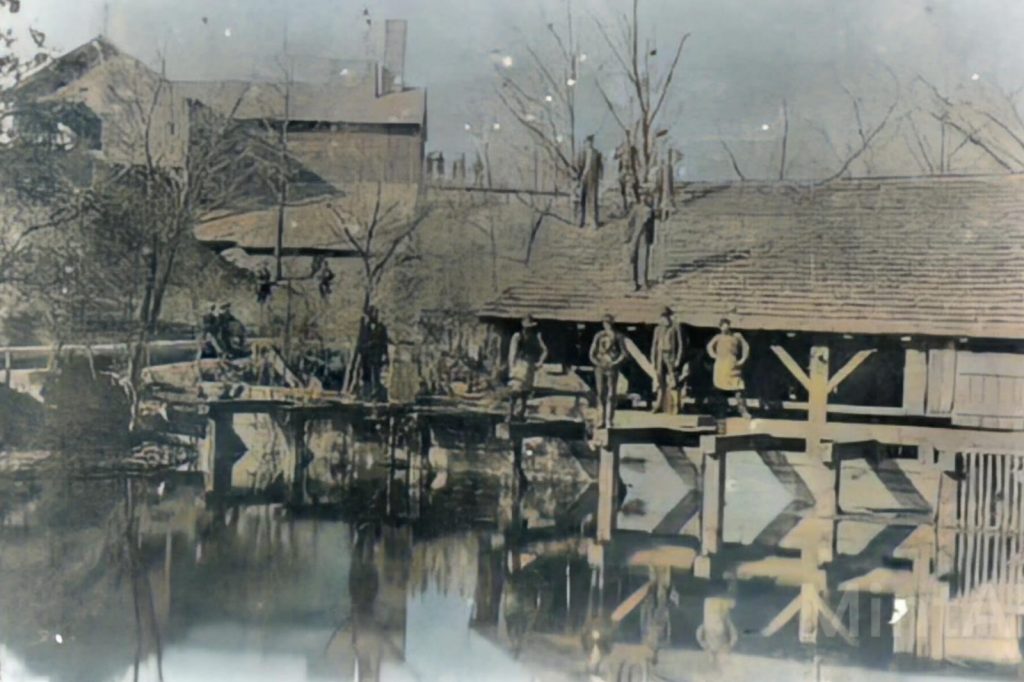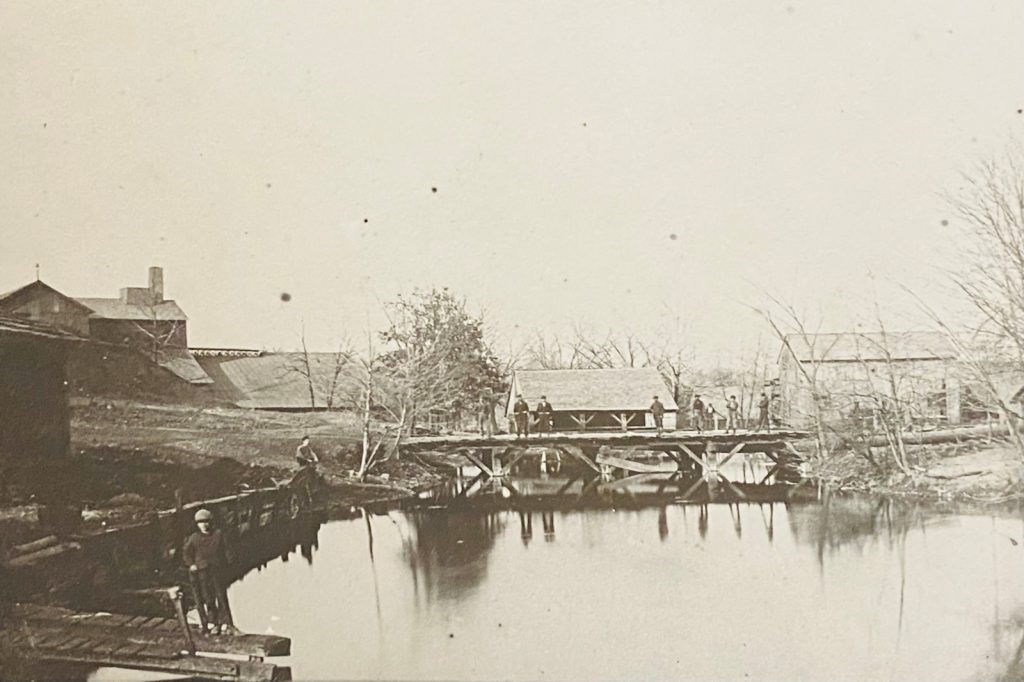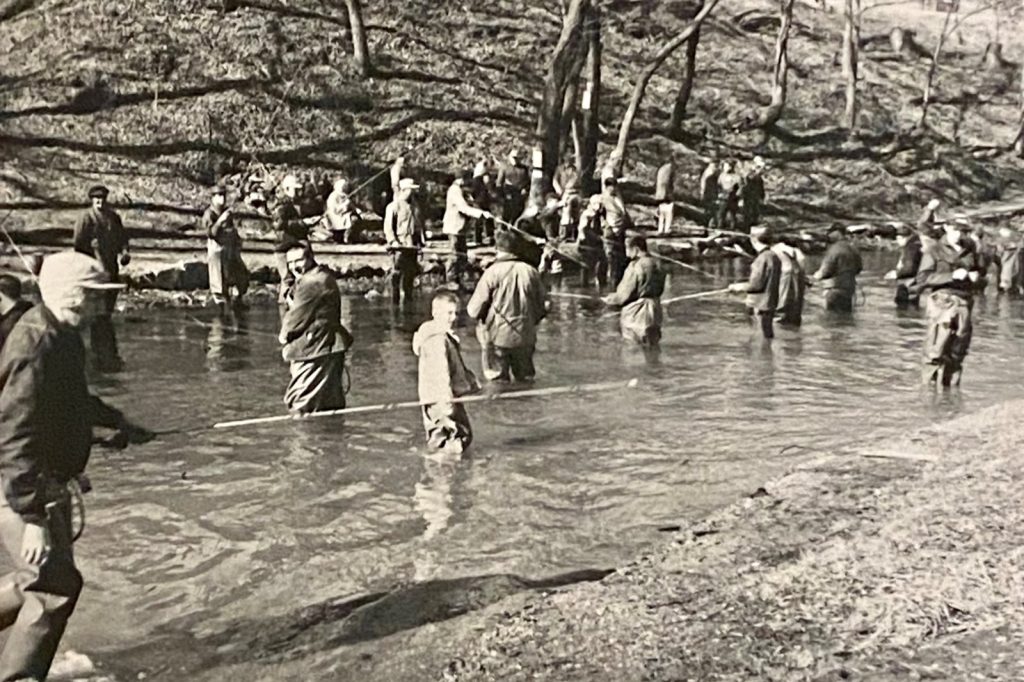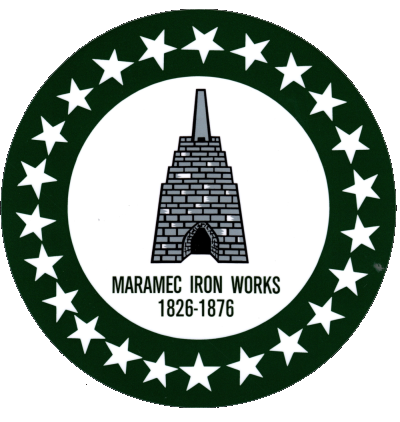History
Historically, vast regions of Missouri, including the site of Maramec Spring Park, were home to various indigenous communities, notably the Osage and Shawnee American Indian tribes, during the early 1800s. The name “Maramec” traces its origin to the American Indian term “Miramigoua” (pronounced Meer-a-mig-whoa-ah), which translates to catfish.
Missouri attained statehood in August 1821. In 1823, Nathaniel Cook, while conducting land surveys on behalf of the US General Land Surveying Office, initially observed hematite in this area.
Thomas James, who operated an Iron Works in Ohio, likely learned of this land report and personally assessed the territory in 1825. He then provided funding for the establishment of Maramec Iron Works. In 1826, Samuel Massey relocated to Missouri to oversee the construction and operation of Maramec Iron Works.
The locale was abundant in crucial resources: timber for fuel, limestone mineral deposits (flux) to enhance iron production, hematite (the foundational mineral for iron production), and a significant water source. These four ingredients were pivotal to the iron manufacturing process, rendering this location exceptionally suitable for an iron works.
Maramec Iron Works was officially founded in 1826, with the furnace reaching completion in 1829, marking it as the first iron works west of the Mississippi River. The furnace operated continuously with 12-hour shifts, 24 hours a day, seven days a week.
Over the next five decades, Maramec Iron Works became a major supplier to a vast portion of the region, leading to the growth of a plantation town with approximately 500 residents. During this period, Thomas James, who owned roughly 10,000 acres of the surrounding land, passed the reins to his son, William James, in 1844. 12 years later, Thomas died in 1856.
In the 1860s, at the height of its operation, Maramec Iron Works played a crucial role in the American Civil War by providing raw iron to the Union. This iron was used to plate ironclad ships patrolling the Mississippi River. Maramec iron’s unique property of denting rather than cracking upon impact from cannonballs and other projectiles made it the preferred choice over other iron works iron.
However, in 1876, Maramec Iron Works succumbed to bankruptcy, primarily due to the competitive pressures stemming from newer technologies and the lack of a sufficiently deep river for convenient transportation of goods by boat. Throughout its 50-year tenure, approximately 375,000 tons of ore were extracted from the mine pit, leaving traces of Maramec Iron in various regions of North America.
In 1920, Lucy Wortham James, the great grand-daughter of Thomas James, acquired ownership of Maramec Spring, along with the surrounding forest and farmlands. In 1938, upon her death, she incorporated her residuary estate into a Trust and authorized the establishment of the James Foundation.
As you explore Maramec Spring Park, you’ll encounter the remains of the former ironworks. The furnace stands primarily intact and holds the distinction of being designated as a National Historic Landmark.





Who Is Lucy Wortham James?
Lucy Wortham James was born in Saint James, Missouri, on September 13, 1880. She came from a prominent family and is known for her intelligence, compassion, and deep appreciation for nature and history.
Lucy Wortham James is best remembered for her remarkable conservation and historic preservation contributions. She had a profound love for the natural beauty of Missouri and was deeply committed to preserving its landscapes and heritage for future generations.
Maramec Spring Park is one of her most enduring legacies. In 1920, Lucy acquired the park that belonged to her family, including the Maramec Spring. She recognized the park’s unique blend of natural beauty and historical significance and established the James Foundation to ensure its protection and public accessibility.
Lucy Wortham James played a pivotal role in preserving the historical heritage of the Maramec Iron Works, located within Maramec Spring Park. This iron furnace, established in 1826, holds the distinction of being the first ironworks west of the Mississippi River. Lucy’s dedication resulted in the furnace’s recognition as a National Historic Landmark, allowing future generations to appreciate its significance.
Lucy’s philanthropic endeavors extended beyond Maramec Spring Park. She supported numerous charitable causes and organizations dedicated to conservation, education, and the arts. Her vision and generosity have a lasting mark on the state of Missouri and the broader world of conservation.
Lucy Wortham James passed away on January 4, 1938. Upon her death, she made her residuary estate a part of a trust. She then authorized the creation of the James Foundation, which continues to preserve and manage Maramec Spring Park, fulfilling her wish of making it a place for the people’s enjoyment and appreciation of nature and history.
To her executors, Lucy Wortham James wrote, as this is considered to be the most beautiful spot in Missouri, it is her great hope that you will arrange that it may ever be in private, considerate control, and perpetually open to the enjoyment of the people.
Lucy Wortham James remains an inspirational figure, celebrated for her dedication to conservation, historic preservation, and philanthropy. Her vision and generosity continue to benefit the people of Missouri and serve as a reminder of the importance of preserving our natural and historical resources for generations to come.
Trail Of Tears
Maramec Spring Park holds space for the sorrowful memory of the Trail of Tears during its passage through the Maramec Iron Works on December 6th, 1837. The enduring echo of history resounds in the path that cut through the heart of the Iron Works, its community and along Stringtown Road. A route marked by the collective footsteps of thousands of Native Americans, the harsh realities of forced migration unfolded—characterized by unforgiving conditions, rampant disease, and profound displacement.
The historic route through the Maramec Iron Works and down Stringtown Road bears witness to the profound challenges faced by indigenous people during this dark chapter in American history. Families were separated, and once-thriving communities were irrevocably altered. Maramec Spring Park, in preserving this somber history, invites contemplation of the resilience of those who endured the Trail of Tears in not only Missouri, but in its entirety.
The park stands as a testament to the endurance of the human spirit in the face of adversity, underscoring the need to acknowledge the historical injustices suffered by Native American communities. The significance of Maramec Spring Park lies in its capacity to facilitate reflection on a painful past, urging a compassionate understanding of the enduring impact of policies that prioritized westward expansion over the well-being and dignity of the indigenous peoples rooted in these lands for generations

The Northern Route Of The Trail of Tears

